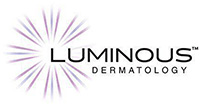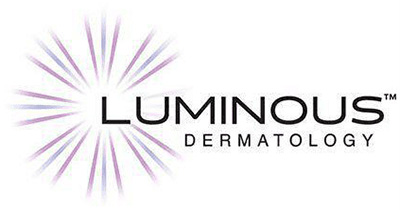Micro-needling is a great skin rejuvenation technique used by dermatologists to smooth and revitalize your skin. Micro-needling creates a controlled injury under the skin’s surface to activate the body’s natural collagen inducing response. This generates new layers of tissue packed with elastin, collagen, fibers and new capillaries. When combined with PRP, tunnels created by the micro-needling process allow infiltration of growth factors into the dermis easily. The deep infiltration of growth factors repairs and triggers tissue regeneration. This combination procedure is ideal for acne scars and skin texture imperfections.
Cosmetic Dermatology
Microneedling
Sculptra
Sculptra is an injectable dermal filler that contains poly-L-lactic acid (PLLA), a biocompatible and biodegradable synthetic material that has been used in various medical applications for many years. Unlike other dermal fillers, Sculptra works differently as it doesn’t provide immediate results by adding volume directly; instead, it stimulates the body’s natural collagen production over time.
Sculptra is primarily used for:
- Treating facial volume loss: It can restore lost volume in areas such as the cheeks, temples, and chin, providing a more youthful appearance.
- Improving skin texture and quality: By promoting collagen production, Sculptra can help improve skin elasticity and reduce the appearance of fine lines and wrinkles.
Juvéderm
Juvéderm is a popular brand of hyaluronic acid-based dermal filler used for cosmetic purposes. It is manufactured by Allergan, the same company that produces Botox. Juvéderm is used to add volume and fullness to the skin, which can help smooth out wrinkles and lines, enhance lips, and contour facial features.
Juvéderm fillers come in various formulations, each designed for specific areas of the face and different cosmetic concerns. Some common types of Juvéderm fillers include:
- Juvéderm XC: Used to smooth moderate to severe facial wrinkles and folds, such as nasolabial folds (the lines that run from the nose to the corners of the mouth).
- Juvéderm Ultra XC: Designed to add fullness and plumpness to the lips.
- Juvéderm Voluma XC: Specifically formulated to add volume to the cheeks and correct age-related volume loss in the midface.
- Juvéderm Volbella XC: Used for lip augmentation and to smooth vertical lip lines (perioral lines).
- Juvéderm Vollure XC: Designed to address moderate to severe facial wrinkles and folds, such as nasolabial folds, with a focus on providing long-lasting results.
Restylane
Restylane is a brand of dermal filler made from hyaluronic acid, a substance that occurs naturally in the body. It’s primarily used to add volume and fullness to the skin, which can help smooth out wrinkles and lines, enhance lips, and contour facial features.
Restylane injections are commonly used to:
- Reduce the appearance of facial wrinkles and folds, such as nasolabial folds (the lines that run from the nose to the corners of the mouth).
- Enhance and plump lips.
- Restore lost volume in the cheeks and temples.
- Soften under-eye hollows or dark circles.
- Improve the appearance of scars, such as acne scars.
Dysport
Dysport is a brand name for a type of botulinum toxin type A injection. It’s similar to Botox, another well-known brand of botulinum toxin, and is used for cosmetic purposes, particularly to reduce the appearance of facial wrinkles and lines. Dysport works by temporarily paralyzing the muscles into which it is injected, which smooths out wrinkles and prevents new ones from forming. It’s commonly used to treat frown lines between the eyebrows, forehead lines, and crow’s feet around the eyes. Additionally, Dysport is sometimes used for medical purposes, such as treating muscle spasms or certain neurological conditions.
Lumps, Bumps and Moles
About Lumps, Bumps, and Moles
What are they?
“Lumps, bumps, and moles” is a general term that typically refers to warts, skin tags, vascular birthmarks, cysts, fat deposits, and more. Normally, these skin growths and irregularities are benign; however, they can have a negative bearing on your self-esteem because they often form on parts of your body that are easily visible, such as the face or neck. Other areas of the body that frequently develop lumps, bumps, and moles include the torso, back, arms, legs, and groin.
What causes them?
Since lumps, bumps, and moles can develop due to a multitude of reasons, it is important to schedule an appointment with a dermatologist who can properly identify and treat your particular condition.
Common treatments
Our skin experts have the training, knowledge, and experience to help you manage a variety of lumps, bumps, moles, warts, cysts, vascular birthmarks, and other skin irregularities. Treatment options include pulsed dye laser (PDL), Cutera Excel V laser, steroids, surgical excision, and prescription oral or topical medications. In some cases, such as with moles, only simple observation is necessary. However, since benign skin growths and irregularities vary from person to person, a consultation with your favorite skin specialist is the only to way to know which treatment is best for you.
Providers
Our approach & expertise
We understand that abnormal lumps or bumps in your skin may seem like nothing more than just a sign of aging, but they may actually be damaging the health and appearance of your skin. As your neighborhood skin specialists, we’re here to provide encouragement and advice about a variety of lumps, bumps, and moles. Our compassionate staff of experts is ready to answer your questions and address your concerns, so don’t hesitate to contact us today so we can manage these unwanted skin irregularities.
Melasma Treatment
Melasma is a common skin condition that causes brown patches on the cheeks, forehead, upper lip or chin. Melasma usually occurs in women and is most common in people with darker skin tones, including those of Latin, Asian, Middle Eastern, African and Mediterranean descent. Dermatological Studies show that sun exposure, pregnancy, birth control pills, hormone therapy and heredity factors are the most common causes of melasma. Any sun exposure can trigger melasma because the pigment-producing cells in the skin (melanocytes) are stimulated by ultraviolet light from the sun.
Sun Screen
The best way to prevent melasma is by using sun screen and staying out of the sun. A wide brimmed hat and application of sunscreen SPF 30 or higher every two hours will help to keep you out of the sun’s harmful rays and lower your chances of getting melasma.
Prescription Medication
Prescription medication may be recommended as treatment based on your needs and melasma symptoms. The common medications we recommend are hydroquinone to lighten dark patches, tretinoin to exfoliate and enhance skin lightening or corticosteroid cream to reduce irritation.
Chemical Peels
Chemical peels are an effective way to eliminate skin discoloration and restore a more even appearance of your skin. We offer many different treatments such as light, medium, or heavy depth chemical peels for various skin types. Our chemical peel treatments have also been known to cut down on precancerous lesions that may lead to the development of skin cancer.
Brown Age Spots (Sunspots)
About Brown Age Spots (Sunspots)
What is it?
Also known as liver spots or sunspots, brown age spots are not always uniform; they can be tan or black, can differ in size and shape, and usually appear on areas commonly exposed to the sun, such as the face, hands, arms, and shoulders. Although normally a cosmetic issue, brown age spots can develop into a medical issue if the spots rapidly enlarge, bleed, or change into unusual colors. If you notice these, please see your neighborhood board-certified dermatologist immediately.
What causes it?
Brown age spots are primarily caused by years of exposure to the UV rays of the sun (or to those of indoor tanning), which is why you may associate them with aging; however, brown spots can develop in younger people, as well. To be more specific, the spots result when the UV rays cause the buildup or clumping together of melanin in a localized area. Although brown spots can develop on any skin color, if you have light skin, you’re more susceptible. This is also the case if you have a history of sunburns or have spent a lot of time in the sun during your life.
Common treatments?
We understand that aging and years of fun in the sun can bring about changes in your skin, particularly brown age spots (or sunspots), which can have an effect on your self-esteem. As your community skin experts, we’re here to offer encouragement, answer questions, and provide solutions regarding this issue. Our skin experts offer a variety of treatments for liver spots, but they are based on your overall health and aesthetic goals. Options include prescription oral medications, prescription-strength creams, laser treatment, IPL therapy, dermabrasion, cryotherapy, and chemical peels.
Providers
Our approach & expertise
Our skilled dermatologists have the knowledge and experience to provide treatment options tailored to suit your needs and meet your goals. We’ll be with you throughout the process, providing compassionate advice and support. Your healthy skin is our passion. Contact us today if you notice brown age spots so that we can help you look your best.
Spider Veins
About Spider Veins
What are they?
What causes them?
Varicose and spider veins are enlarged veins that often twist and can bulge above the surface of the skin. They may be blue, red, or flesh-colored. Spider veins often look like webs. There are several ways that you may develop veins that are visible on the top layer of your skin. Genetics can play a part, if your family has a tendency to develop visible spider veins, then you might also get these. Another is due to work environments, if you tend to stand or sit too much you can possibly develop these over time. There are many reasons why our bodies react or develop things, regardless, the good news is that they are treatable.
Common treatments


